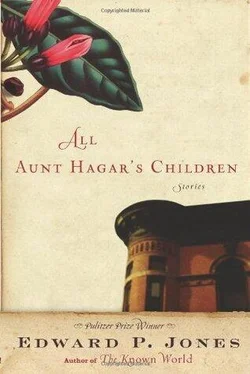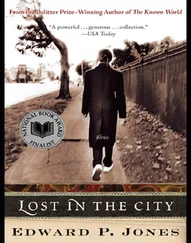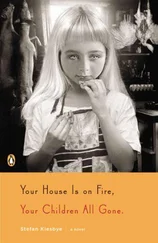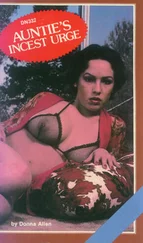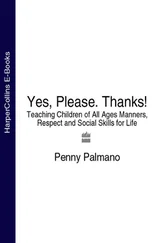“Would everyone like something to drink?” Arlene said after several minutes, and when she stood, there was a sharp intake of breath from the girl.
“A nice cold Coke,” Marcus said. “No,” Marvella said, “orange juice for everyone.” “Juice for sissies,” Marcus said.
Avis continued to look at Arlene, who said, “Why not come with me?” But the girl seemed unable to move. “I’ll help you,” Marvin said at last, looking down at his sister. “She shy that way.”
She’s never gonna be the same again, is she?” the boy said, watching Arlene as she looked in the icebox.
“No, son, she won’t be.” Avis’s father had called Arlene the night before to tell her about the eight murders. She remembered the crime but did not recall that a child had survived. “But in her way, she’ll still be Avis. Her family will see to that.” She turned from the open icebox. She had not expected such a boy. “We will all survive this, son.” She had not felt such confidence until she saw Avis walk into the apartment and cling to her with her eyes. Marvin looked to a series of ten photographs to the left of the refrigerator, five in color on the top row and five in black-and-white on the bottom. “The top one to the far left,” she said, pointing, “that is my son at one year old. Next to it is my son at two years old, and there he is at three years old….” Each photograph was of the child at each of his birthday parties, and he was happy in all of them. “That is my son at six years old. That is my son at seven….”
Marvin wanted to know why there were color pictures only on the top row.
“Those were taken by my son’s father,” Arlene said. “I was not there. I was away. The bottom photographs are mine.”
“Color is better, I think,” Marvin said. He avoided her eyes, afraid that he had offended her.
“That is what they are telling me, but I am too old to change that way.”
Over the next months, there arose between the girl and the woman what Arlene described in her diary as “a love I cannot live without.” She often felt a greater pull toward Avis than toward her own son. The girl and the woman talked every evening on the telephone, and the child spent at least one weekend a month with Arlene. Avis’s father, seeing what Marvella was slow to see, would now and again give up one of his weekends with Avis so the girl could be with Arlene. Then, toward the end of January, Marvella began to see as well, and she allowed Avis to stay some weekday evenings with Arlene. They wrote to each other daily, as if there were ten thousand miles separating them. “One day you will see that Tennessee creek again for the first time,” Arlene wrote her in March. The girl had never been near Tennessee. “And I will see the house again for the first time.” She was speaking of the Harvard Street house of the eight murders, a house she had never seen. A year after the people had been killed there, two wealthy white lawyers bought it, not caring about its history. Indeed, they decorated the front hall with copies of the newspaper articles about the crime, about the girl who had survived but had lost her best friend.
In April Scott asked Arlene to marry him, but she gave him no answer. He asked three days before he mailed a flyer about the Guatemalan woman. The creator of the flyer seemed to expect its readers to know who the woman was, and it gave little information about her, just where she would be speaking in Washington in May. At first Arlene could not understand why Scott thought she would be interested, but an article in the newspaper five days after she got the flyer told her more. There was a color photograph of the woman, Eulogia Rios, spread over a fourth of the top page of the style section. Eulogia, eighteen years old, was standing on a Washington street in simple brown shoes and a dress of brown and red and blue stripes. She was looking so deeply into the eye of the camera that Arlene felt as if she herself had taken the picture. In two separate photographs on either side of Eulogia were her paintings. The headline above her head read, “The Miracle from Guatemala.” One painting was of Arlene’s pregnant aunt, the one who had been pulled away and killed by the angry creek in Tennessee.
Avis’s parents permitted Arlene to take the child to hear Eulogia speak, and the two got seats in the fourth row in an auditorium at the New York Avenue Presbyterian Church. Twelve framed paintings in the same style as those in the newspaper photographs were displayed along the stage. Not long after they sat down, Avis pointed to three of the paintings and whispered to Arlene, “I know those people.” At seven thirty precisely, a nun walked onto the stage from the left, followed by Eulogia in a light blue dress and simple black shoes. There was applause, but after the nun, still walking, raised her hand, people stopped. The nun introduced her and Eulogia stepped to the podium, and in the English she had learned over nine years in the United States, she began speaking.
She talked without tears, in an even voice that a practiced traveler might use to share the stories of her travels. She had been eight years old, she said, sitting in the third row of a classroom of a school that the villagers had just begun building the week before. There were no walls and the children could see out all over the land as their family members and neighbors farmed and worked. “The wind was a good one that day, coming down the mountains and over the valley,” Eulogia said, patting her hand gently to the side of her face. Their teacher, Eulogia said, was a young woman who had been born in the village and had returned to live there, bringing her husband, a doctor born in Peru. If she had told her story before, it was not obvious.
They were newlyweds, the teacher and the doctor, and the schoolchildren, that morning, had managed to get her to talk about their honeymoon in Peru. The soldiers, all of them in civilian clothing, were already in their trucks and jeeps on the outskirts of the village when the teacher, Mrs. Parados, began talking about the smoking and coughing bus that took her and Dr. Parados down a mountain toward the biggest town in the region. Eulogia said Mrs. Parados made every sound the bus made, and she imitated the other bus riders, including the man who held the rooster on his lap and made the bird dance by blowing on the back of its head. The teacher’s story of the bus, which had about seventeen other passengers in addition to the newlyweds, had reached the point where the vehicle had gotten to the bottom of the mountain and was heading toward what passed for a downtown when the soldiers streamed into Eulogia’s village and began killing the people farthest from the school. The village was not a big one and so it did not take them long to reach the school with Mrs. Parados and her twenty-three pupils. “The village was all killed, even down to the littlest chicken,” Eulogia said, “all of them except me. One hundred and fifty-nine people, which does not count the unborn children still in their mothers’ bellies.” She stopped, as if remembering something. “I never heard the end of her honeymoon story,” she said at last. “Mrs. Parados and Dr. Parados have yet to reach that downtown in Peru.”
The paintings along the stage were of some of the dead in the village. Eulogia explained that because she had been alive only eight years at the time, she did not know all of the hearts of all of the people. But she had seen them all at one time or another as she lived her little girl’s life. A painting of someone she knew, Eulogia continued, took some two months to complete, while one of someone whose heart she did not know sometimes took as long as nine months. At that time in her life, the evening at the church, she had completed nineteen paintings. She went to the left of the stage and picked up a painting of a very old man in a straw hat. His bony legs were crossed and he was looking straight at the young woman who painted him. “Señor Efrain Hernandez,” Eulogia shouted. “Seventy-seven. All I know about him is what I learned as I painted him. Though he took eight months, the longest so far, he will not be the hardest to paint. The hard ones are yet to come.” After several minutes, she put down the old man and raised up a boy, barely in his teens. “Fidel Rios,” she shouted, “my brother who sat two rows behind me in class. Two and a half months to paint. He had wanted to be in the fields with my father that day, but my father had made him go to school.” It was Fidel Rios, but it was also the oldest brother of Avis’s best friend.
Читать дальше
